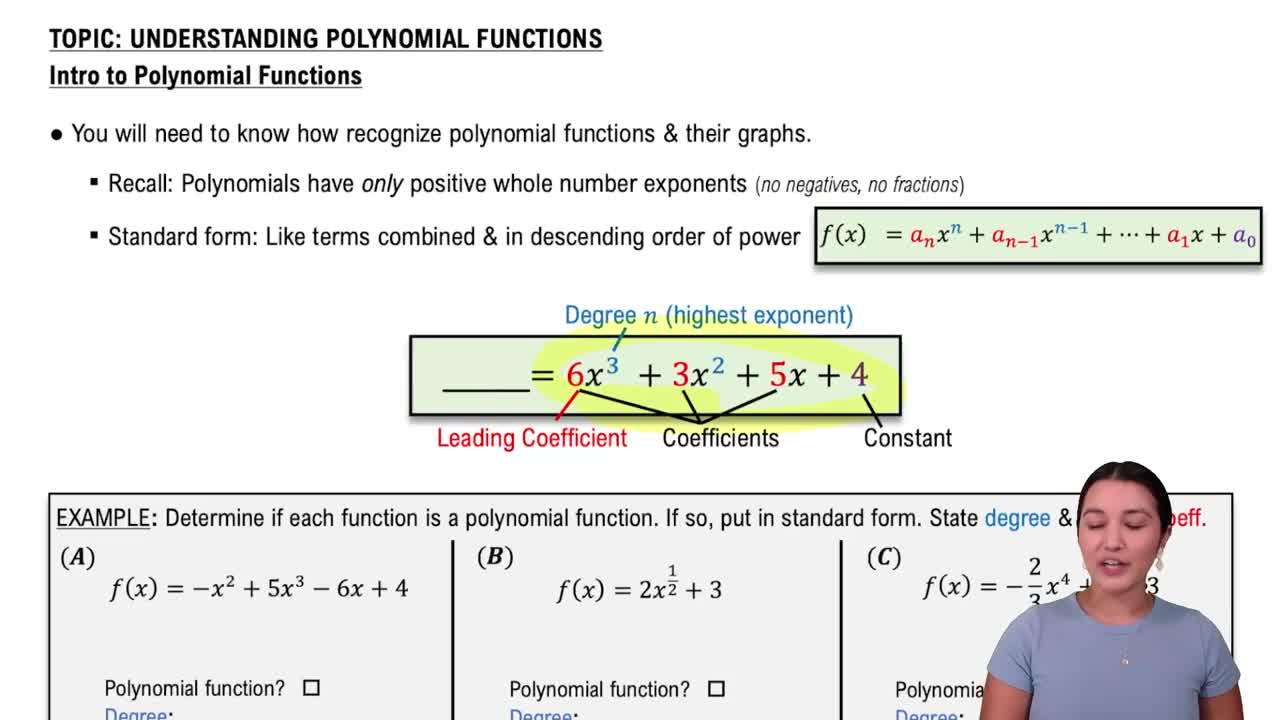Here are the essential concepts you must grasp in order to answer the question correctly.
Synthetic Division
Synthetic division is a simplified method for dividing a polynomial by a linear binomial of the form (x - c). It involves using the coefficients of the polynomial and a specific value (c) derived from the binomial. This technique streamlines the division process, making it faster and less cumbersome than traditional long division.
Recommended video:
Polynomial Functions
A polynomial function is a mathematical expression involving a sum of powers in one or more variables multiplied by coefficients. In this context, the polynomial is represented as 5x^4 + 5x^3 + 2x^2 - x - 3, where the highest power of x indicates the degree of the polynomial. Understanding polynomial functions is crucial for performing operations like division.
Recommended video:
Introduction to Polynomial Functions
Remainder Theorem
The Remainder Theorem states that when a polynomial f(x) is divided by a linear divisor (x - c), the remainder of this division is equal to f(c). This theorem is useful in synthetic division as it allows for quick verification of the results by evaluating the original polynomial at the root of the divisor.
Recommended video:



